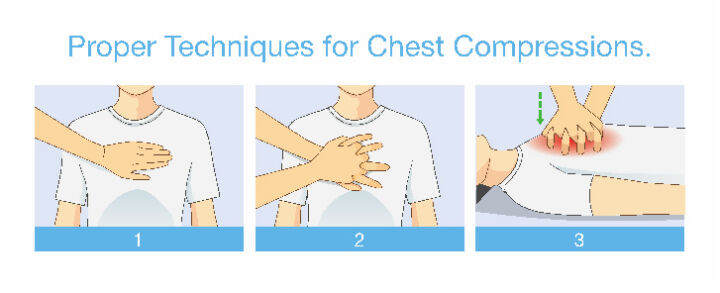What Happens During a Stampede and How to Stay Safe?

A stampede is a deadly and dangerous situation that occurs when a crowd surges beyond the capacity of a space, moving in the same direction at the same time. During a stampede, people collide and pile up against or on top of one another.
Recent stampedes that caused the death of more than 150 people during a Halloween event in Itaewon, Seoul, South Korea on 28 October, and more than 130 people after a football match in Malang, Indonesia, on 2 October, show just how dangerous stampedes are.
What Causes a Stampede?
Stampedes can occur due to various reasons. Some of the hazards include:
- Overcapacity
- Poor crowd control
- Poorly planned event spaces with no clear exits
- Narrow spaces
- Bulky or dangerous structures
Dangers of Compressive Asphyxia During a Stampede
While many people may fall and get trampled on during a stampede, the most common cause of death is compressive asphyxia, a dangerous condition that happens when breathing is prevented by external pressure on the body.
Humans take in oxygen through respiration by moving air in and out of our lungs. While our blood transports oxygen to the cells in our body, carbon dioxide, a waste product, is transported out of our body via the same system.
During a stampede, people who are stuck in the crowd crush against one another. This means there is no room to move. This limits the diaphragm, a major muscle responsible for respiration, from contracting (tightening) and flattening (relaxing), which means air cannot enter or leave the lungs.
When this happens, it can quickly lead to compressive asphyxia with a build-up of carbon dioxide and lack of oxygen. The human body cannot function without oxygen for long as it can quickly lead to organ failure and brain death.
Who is Most at Risk of Compressive Asphyxia During a Stampede?
While evidence of women being more prone to compressive asphyxia is inconclusive, the deadly crush in the Halloween celebration claimed almost twice as many women as victims as it did men – out of the 153 victims, 97 of them were women.
Women generally have smaller frames and more body mass in their upper chest. If pressure is exerted there during a stampede, the impact can be detrimental for women.
How Do We Help People with Compressive Asphyxia?
Compressive asphyxia is dangerous but it does not always result in death. With timely intervention through first-aid such as cardiopulmonary resuscitation (CPR), people suffering from compressive asphyxia can be saved.
If you are not familiar with CPR and do not know how to perform CPR correctly, it is always best to try than do nothing. Victims with compressive asphyxia or conditions such as cardiac arrest can sustain permanent brain damage after four minutes. CPR helps to keep oxygen-rich blood flowing to the brain and other organs until emergency medical treatment arrives.
Before you administer CPR, check if victim is still breathing. If there is no pulse or breathing within 10 seconds, perform CPR.
How to Administer CPR
- Kneel with knees slightly apart.
- Interlace fingers.
- Place the heel of your hand on the lower half of the sternum (breast bone).
- Position your shoulders directly over the casualty’s chest.
- Straighten both elbows and lock them in position.
- Use bodyweight to achieve a compression depth of 4-6cm and perform CPR at a rate of 100 to 120 compressions per minute.
- Give two breaths.

Tips to Staying Safe in Large Crowds
If you are planning to attend a crowded event such as a concert or sports event that will be held in small spaces, plan ahead to stay safe.
Here is what you can do to protect yourself:
- Check the weather forecast. If it starts to rain, crowds could surge or start to panic when seeking shelter. Dress appropriately and be ready for when it happens.
- Do not go alone. Attend the event with a friend or partner and look out for each other.
- Wear bright-coloured clothes. This helps you to stand out in the crowd and makes it easier for others to identify you during an emergency.
- Make a mental note of all exits. Should an emergency arise, you may not be able to get to the exist nearest to you. Plan your route to the next exit and leave the venue as soon as you can.
- Hold railings for support. If available, hold onto railings for support when going up stairs or escalators.



